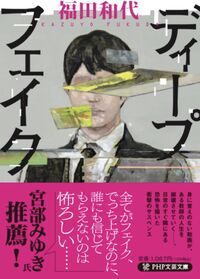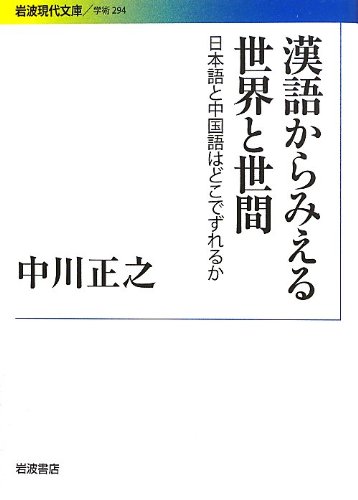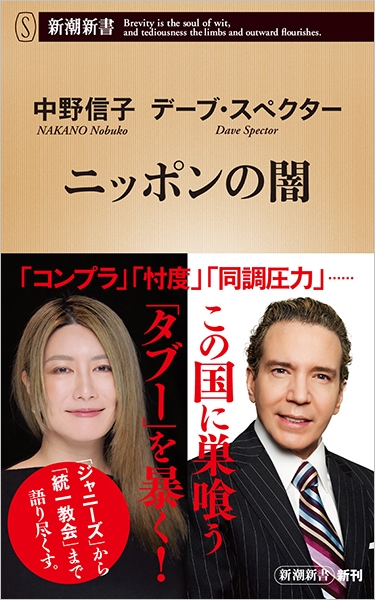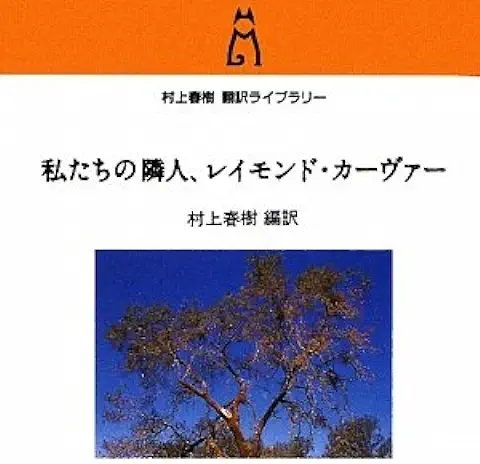
All writers are travelers, even as all readers are followers. Sometimes the roles are reversed. Us literary disciples stray from the established footsteps on the pre-established, timeworn path, inadvertently or intentionally, thereby making new indentations of our own. Those voyagers that come after us must then decide for themselves which route to emulate, and which they might safely abandon in favor of uncharted trails.
In Marie Mariya’s 2022 book ドナルド・キーンと俳句 (‘Donald Keene And Haiku’), the author follows the celebrated translator and scholar of Japanese literature throughout the course of his long artistic lifetime as he ushers the world of haiku into the modern era.
I, in, turn, followed Mariya’s investigative journey of Keene’s copious amount of creation, criticism, journalism, interviews. You, by reading this review, are, in essence, watching me watch Mariya watch Keene watch Bashō (and other poets).
Whose footsteps came first? Which aesthetic link in the chain is the tightest, the strongest? Knowing what you know now (or will soon know, or perhaps already know) about Keene, and Mariya, and my thoughts on them both, who might you then lead into further exploits of Japanese poetic explorations?
It’s that kind of book, this one.
Makes you think about who came before, and who might be next.
Mariya is nothing if not a genial guide through Donald Keene’s fascination with haiku and its almost infinite form(s). Not to mention an exceedingly gracious and enthusiastic one, too. In her prologue, she starts at the end — in front of Keene’s grave. Taking note, as she does, of the insignia of a golden dog on his tombstone, the 黄色 犬, which might be read as ‘ki’ and ‘inu’, thereby approximating the sound of ‘Keene’. Paying tribute to him in his final resting place, his work an inspiration to her, his ‘travels’ a beacon.
She mentions how she met him only once, in 2016, at a haiku conference also attended by one of Keene’s former students, Janine Beichman (who will reappear in an interview later in this book talking glowingly of her mentor). Mariya, along with her sister, were the co-authors of a (then) soon-to-be-published, modern translation of Arthur Waley’s THE TALE OF GENJI; they reinterpreted his elegant English translation of ancient Japanese into a present-day form of contemporary Japanese.
Clutching a copy of Waley’s work, Mariya was able to share her enthusiasm of the legendary British translator in person with Keene, who eagerly asked her for her favorite scene from GENJI. (His adopted son would later email a picture of the two sisters meeting their idol, much to their mutual delight.) In 2020, their translation would win the Donald Keene Special Award, with Keene’s son informing Mariya that his father was currently smiling in heaven, happy that they had won that prize in his name.
From this introduction, it’s clear that Mariya practically worships the American (and later, officially, Japanese) author, but the book itself is not any kind of hagiography, per se; it’s not strictly a biography of the man, but rather a record of the intellectual journey of his life — although, in Keene’s case, it may, in fact, be difficult to separate his ‘self’ from his calling, from the country that continually beckoned him through its ancient poetry and prose.
Mariya does, however, provide a brief biographical background, at least as it relates to his relationship to the Japanese language.
She notes how he first encountered anything ‘Japanese’ at the age of ten, when, for Christmas, he was gifted with a set of encyclopedias related to ‘countries of the world’, one of which pertained to Japan, and even contained a few haiku, such a strange condensed form!
Later, as a teenager, at the dawn of World War II, a deeper appreciation of Japan would begin when he stumbled upon a two-volume, paperback version of Waley’s THE TALE OF GENJI in a New York bookshop, selling for the tidy sum of forty-nine cents. A lifelong pacifist, Keene was able to find comfort at that troubling time in the ancient Japan that Waley so vividly depicted, where brutal conflict was absent and intimate human relations remained paramount.
Mariya then races ahead, past Keene’s studies at Columbia to his year-long study at the Japanese language school run by the Navy. (For a deeper look at Keene’s Japanese language-study, I’ve included at the bottom of this post a link to my review of a book that delves deep into that time of his life.) If he had to be involved in war, he at least wanted his burgeoning pursuit of Japanese to be front and center.
And it would eventually come in handy, that knowledge. Mariya notes how that American soldiers were forbidden from keeping diaries of any kind, lest stray military details found their way into those (supposedly) private entries, but apparently Japanese enlisted men had no such forbidden provisions. On the island of Guadalcanal, Keene came across the diaries of dead Japanese soldiers; he would also interview captured soldiers about their wartime experiences. His love of the Japanese language was merging with the brutal fragility of life.
Mariya relates how, unlike other world cultures, Japan might be the only country, historically, that has applied true respect, even reverence, to the act of writing diaries, assessing them as bona fide literary art forms in their own right. Through translating these Japanese diaries, Keene was able to experience for himself, via the words of others, how feelings and perceptions might find a firm aesthetic foothold in print.
After the war, back at Columbia, Keene would continue his study of Japanese literature, eventually teaching the subject at Cambridge University and studying in Japan from 1953 to 1955. It is here, in this time, in this place, that Mariya truly begins her exploration of Keene’s work.
She quotes extensively from a 1955 magazine article that Keene wrote for the monthly literary magazine 中央公 , in which he retraced the famous Edo era haiku poet Bashō’s journey depicted in his famous work おくのほそ道 (‘The Narrow Road to the Deep North’). This journalistic assignment by Keene depicted his previous year’s trek in those oh-so-modern times of February, 1954.
Keene had no, pardon the pun, keen interest in modern literature, so this type of literary journey quite literally into the past made perfect sense for him.
(Even the deluge of rain mirrored the weather of Bashō’s own trek, making Keene wonder if he was a true 雨男 [‘ameotoko”, an unfortunate soul who was always unlucky with the weather.)
At one point, recounting how he eagerly walked up a particularly mountainous path, feeling perfectly in step with his ancient literary idol, Keene writes how ludicrous it was that people would use a bus to more easily traverse this treacherous terrain; Mariya rather wryly wonders if, when the ninety-one year old Keene would return to this same area decades later, he still held those same rigid sentiments!
After recounting Keene’s magazine article of this following-in-Bashō’s-footstephs, the author details how Keene’s first two works on Japanese literature, published in the mid-1950s, entirely changed the game when it came to the rest of the world finally recognizing Japan as a source of true literary, artistic merit.
Not that this was necessarily a predictable occurrence, however. She mentions how, in 1953, when Keene first started teaching Japanese literature at Cambridge, he had a total of ten students, making him seriously consider taking up the Russian language, by then an academic mainstay; he wondered if it was even possible to make a living in Japanology, a field that did not even feasibly existed?
Yet he persisted, and his book JAPANESE LITERATURE: AN INTRODUCTION FOR WESTERN READERS, followed two years later by ANTHOLOGY OF JAPANESE LITERATURE, which earned an enormously favorable endorsement by the esteemed SATURDAY REVIEW, paved the way not only for the rest of Keene’s career, but for an entire methodology that would endure for decades to come.
From this point on, Mariya devotes most of her time to analyzing Keene’s own analysis of various individual haiku and chronicling the history of modern haiku itself, including Keene’s impact on the diversity and worldwide development of such a quintessentially ‘Japanese’ art.
Indeed, Mariya writes of how Keene was so apt a translator, and such a perceptive critic of the form, that Yukio Mishima himself (who Keene would later both translate his works and befriend) used the metaphor of Keene catching so many unique fish in Japan that it was a shame that it had to be a foreigner who proved to be such an adept fisherman.
Mariya does a brilliant job of not only analyzing-Keene-analyzing-Bashō, but she also provides wonderful commentary on what makes haiku (and all its attendant offshoots) such a mesmerizing poetic field of expression.
In haiku, the situational and temporal become one; this precise moment and ever-lasting eternity coincide. Keene was able to reinterpret the specific sounds of haiku and somehow find adequate English translations that approximated the aural effect, if not the actual emissions, that each specific character enunciated.
The small moments in haiku need to be revelatory; they also need to artistically incorporate the recognition of those moments, without ostentation.
Keene was able to isolate those moments, then re-establish them in English.
Via Bashō’s poems, Keene could, within the requisite seventeen syllables allowed, identify the exact space between ‘now’ and ‘eternity’.
Finding the perfect English equivalent was the key, the proper alliteration of sound, as in this translation by Keene of Kuniharu Shimizu that Mariya cites:
White, whiter
Than the stones of Stone Mountain —
This autumn wind.
The three ‘w’ sounds in the poem, and the replication of ‘stone’ (in Japanese ‘Ishiyama no ‘Ishi’, with ‘Ishi’ as stone, recited twice), and the use of a ‘dash’, and the period at the end — all Keene ‘inventions’, of a sort, that perfectly encapsulate the Japanese original.
Throughout the book, through Keene’s various haiku translations of different haiku poets, Mariya evokes her appreciation, through concrete examples of Keene’s own, almost overpowering artistic sensibilities.
Yet she also places Keene in a literary context, spending much time — perhaps too much time, one could argue — focusing on who came before him, and who came after, within the wider world of haiku.
She brings up Basil Chamberlain’s 1880 book BASHO AND THE JAPANESE POETICAL EPIGRAMS, and cites Harold Henderson’s early role in bring Japanese literature to the West, then circles back to Lafcadio Hearn, who probably provided the first English translation of Bashō’s ‘frog’ haiku (‘old pond — frogs jumping in sound of water’), and extols upon how the haiku boom in English influenced Rilke and Borges and Pound and the Imagists and even eventually the American Beatniks, before widening her survey even more to discuss, in significant detail, the French, German, and especially Spanish approach to haiku, including how Keene became quite good friends with the Mexican writer Octavio Paz, a particular fan of the form. She also delineates the importance of renka, a kind of linked comic poetic verse in which groups of people might compose a single poem; in the twentieth century, this sort of communal approach to art would find favor among Europeans poets. All of this is historically important, to be sure, but it does, at times, seem a little bit like ‘filler’, edging slightly away from the ostensible subject of Keene himself.
What I found quite interesting was Mariya’s depiction of Keene’s critique of postwar poetry, embodied by the ‘4S’ group of poets who modernized the form by having it tackle certain societal and cultural issues. It seems like Keene was so infatuated with the classical form of haiku — in which the ‘personal’ intercrossed with the ‘seasonal’ — that he had little appreciation for any trendy experimentation with form or content, and he was openly pessimistic about the future of the form.
(A bit of a fuddy-duddy of a view, one could argue, but hey — Keene was equally as incensed about the influx of katakana into the language after the war, a hideous writing-script utilized for the depiction of foreign vocabulary, a form of Japanese that he found blocky and garish, so perhaps it’s no surprise that somebody so attuned to the ancient mode of what Japanese could aesthetically offer would see any artistic or practical modification as intellectually, even morally damaging.)
Mariya ends her book in Keene’s apartment, after his death, as she’s given a tour by his adopted son. She takes note of the two statues of Bashō at the entrance; at the mounds of books and papers in his study; at the sheer, physical proof of the devotion to literature that he had.
(Indeed, so great was his love of the art and the craft that, in a previous chapter, Mariya devotes ample space to some of the two hundred and fifty haiku that Keene himself had composed, his first written on a Chinese island in 1947. He had no special delusions about his own creative ability, and even stated that he usually sketched out a poem when was drunk; even so, his affinity is clear, and moving. Many of these poems seem to have been tossed for friends on special occasions on various-colored paper.)
A final sentiment finds Mariya stating that, in 2022, on what would have been Keene’s 100th birthday, she wants to put a copy of her Waley translation at his gravesite.
I totally get this kind of severe literary adoration.
When I was a university student, I got the chance to meet more than a few of my own literary idols — Norman Mailer, David Foster Wallace, John Irving (twice), Joyce Carol Oates. You felt like you were in the presence of a force that you had such an almost psychic connection with, considering how much time in your head their own words had occupied. (These in-person encounters were especially potent in the age before You Tube, when one rarely even knew what individual authors actually looked like, sounded like.)
I got the same vibe here from Mariya that I felt myself in those days. We tag along after our favorite authors like puppies chasing their owners. We want to walk where they walked. They travel, we follow. Eventually, if we’re lucky, we travel on our own, inciting our own modest crowds. The whole world ended up following Keene’s own obsession with haiku, as this well-travelled author also spread his own knowledge the form wherever he went, resulting in an abiding fascination with this form of Japanese poetry that has stretched all over the globe.
Mariya’s gentle ode to Donald Keene lets us see her, seeing him; we listen to her, to hear him. One trail leads to another, to the next, from the past to the future. Both of their voices end up humming, vibrating, resonating with their own particular chime, even as they can’t help but influence and echo one another.
****************************************
I








